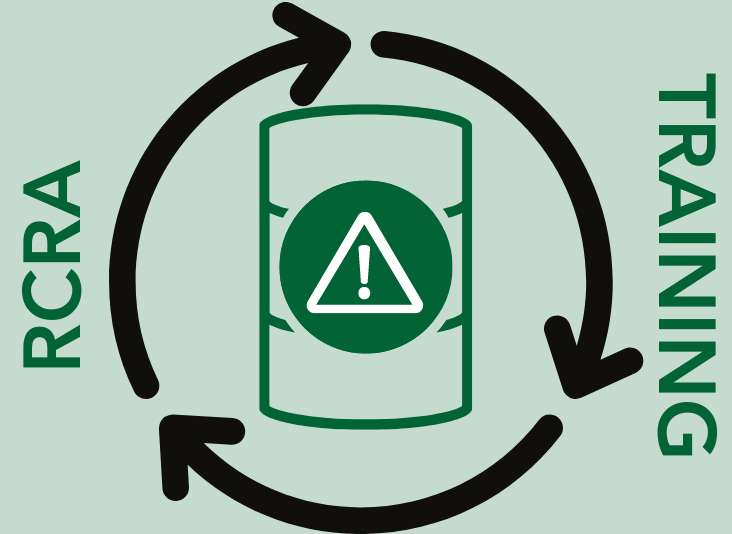A Deep Dive Into the Sea of EHS Training Requirements
Across healthcare, life sciences, higher education, and other industries, environmental, health, and safety (EHS) training is essential. But in a choppy sea of regulations, training types, market demands, and more, it can be challenging to determine which trainings an employee needs, in which format, and at what cadence. Throughout 2024, follow along as we dive into the most common Occupational Safety and Health Administration (OSHA)-required training courses and explore solutions for maximizing their effectiveness.
Compliance Training: Complex Challenges
Every organization has its own unique EHS training demands, but a truly effective training program enables:
- Worker safety, both at the individual and team level
- Compliance with regulatory guidelines
- Workplace productivity and protection
- Thorough reporting, documentation, and analysis
These are just a few vital outcomes—ones that only occur when all employees, with their various roles, responsibilities, schedules, and requirements, are properly trained. Given the complexities of day-to-day operations management, it’s no wonder that managers struggle to:
- Remember which employees need which training
- Keep track of the refresher schedule
- Get employees fully trained during onboarding
- Maintain regulatory compliance as standards change
The Right Training for All
Common workplace training courses include:
- Hazardous Waste Management
- An awareness-level training to familiarize employees with hazardous waste management standards and criteria based on their company’s generator status.
- To learn more about hazardous waste management training, read our "Get Hazardous Waste Management Training Right" blog post.
- Bloodborne Pathogens
- Explores OSHA’s bloodborne pathogens standard, covering what must be done to protect employees exposed to blood or other potentially infectious materials (OPIMs).
- For more about bloodborne pathogens training, read our "Bloodborne Pathogens Training Keeps Your People Safe" blog post.
- Resource Conservation and Recovery Act (RCRA)
- Segmented based on state-specific regulations, RCRA training addresses all relevant guidelines applicable to hazardous waste generators.
- For more information, please read our blog post, which comprehensively overviews RCRA training requirements.
- Chemical Hygiene Plan (CHP)
- This training introduces the basic requirements of CHPs to ensure effectiveness and efficiency.
- For more CHP training information, read our "Training: The Backbone of Chemical Hygiene Plans" blog post.
- Emergency Action Plan (EAP)
- This training covers basic planning, writing, and implementation of EAPs for promoting safety and avoiding fines.
- For more information about EAP training requirements, read our "Training Puts the 'Action' in Emergency Action Plan" blog post.
- Department of Transportation (DOT) Hazardous Materials
- Hazardous materials must be prepared for shipment in accordance with stringent guidelines. This course reviews these guidelines and facilitates successful shipment.
- Ergonomics
- Ensures employees know the risks associated with improper workplace ergonomics and provides tips for prioritizing correct ergonomics.
- To learn more about ergonomics programs training, read our "Ergonomics Program Training: Do It Right!" blog post.
- Dry Ice/Waste Shipping
- The DOT regulates dry ice as a hazardous material. This training teaches employees how to properly prepare dry ice shipments.
- Hazard Communication
- This training familiarizes employees with their organization’s workplace hazard communication system, including all relevant OSHA and Global Harmonized System of Classification and Labeling of Chemicals (GHS) requirements.
- For more about Hazard Communication training, read our "Tell Me All About Hazard Communication Training" blog post.
- International Air Transport Association (IATA) Dangerous Goods
- Air shipments come with their own set of strict guidelines, separate from those applicable when shipping by motor vehicle, and regulated by the IATA. This training is a supplemental and function-specific element of the DOT Hazardous Materials training.
- Biosafety
- Learn how to protect your employees and the general public from hazardous biological agents.
- For more about Biosafety training, read our "Biosafety Levels Guide: Everything You Need to Know" blog post.
- OSHA Emergency Response (ER), Hazardous Waste Operations and Emergency Response (HAZWOPER)
- Those required to respond to actual or threatened releases of hazardous substances must be trained to handle such situations to ensure safety for people, property, and the environment.
Partner for Well-Designed Trainings
Triumvirate Environmental offers all of these trainings and more as part of EHSLearn™. We provide two training formats to fit your needs:
- Virtual or in-person instructor-led courses (EHSLearn™: Seminars)
- Immediately available, self-paced online courses (EHSLearn™: On-Demand)
Check back here for upcoming deep-dive blogs into these common trainings, and contact us to learn how we can help your company remain safe, compliant, and productive through efficient and reliable training programs.







